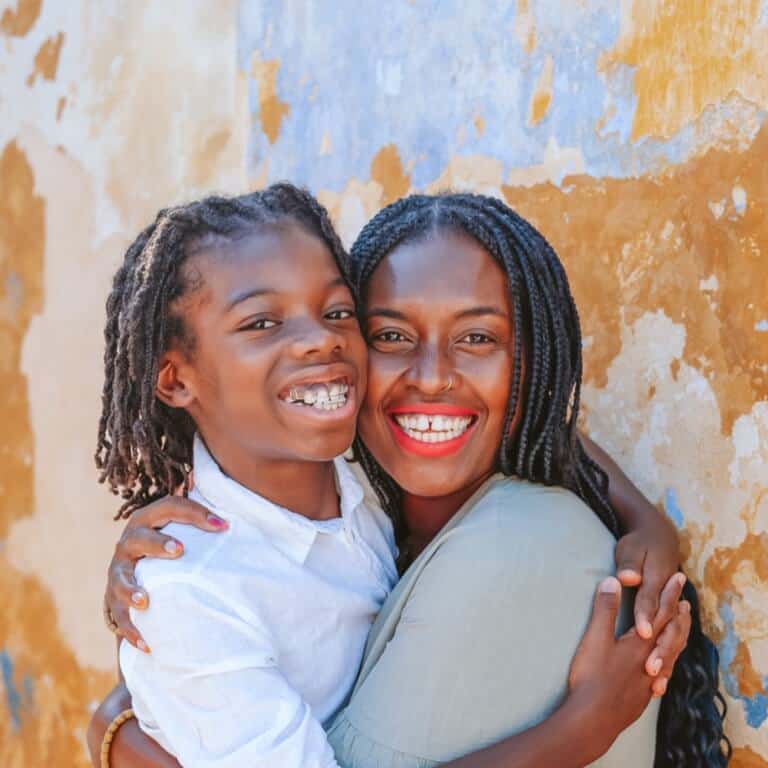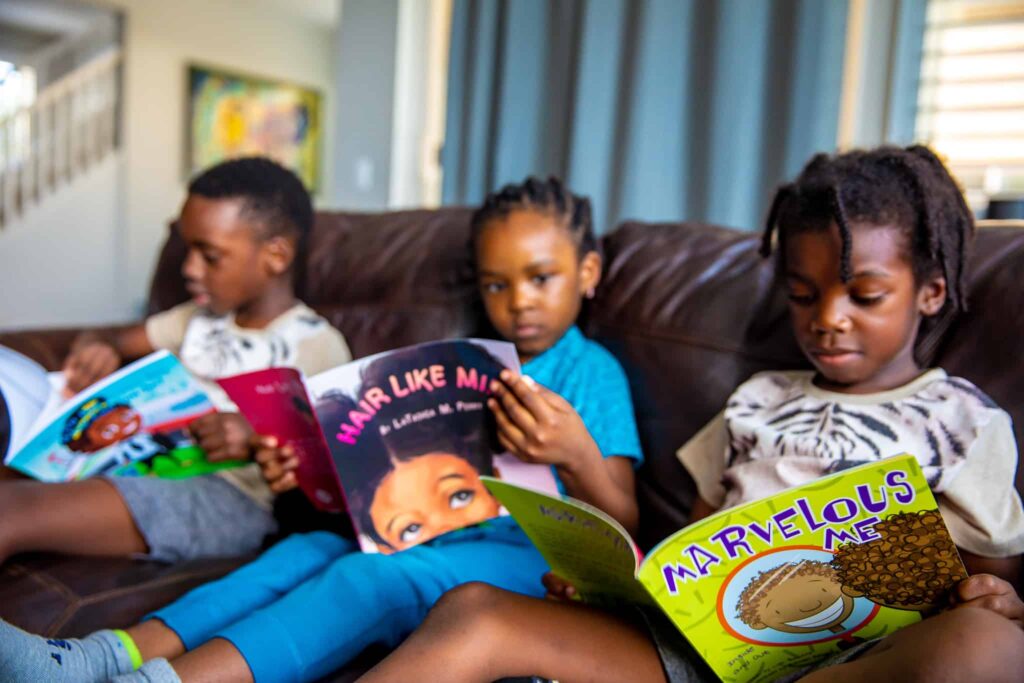
This post may contain affiliate links. By clicking on any of the links below, I may get a commission if you make a purchase at absolutely no additional charge to you. This helps offset the costs of running this blog & I appreciate your support. Please see my privacy & disclosure policy for more.
Table of Contents
As a Black woman, the wife to a Black man and mother to a Black child, diversity is a topic I am very passionate about!! My brand message and goal is to raise global citizens who are open and accepting of everyone.
Someone once said to me, “I had a black friend in college, I promise I’m not racist.” Another said “I have a black child, how can I be racist?” The “I have a black friend / I have a black spouse / I have a black child / I have a black dog (etc) so I’m not racist” narrative is so untrue.
‘In a racist society, it’s not enough to be non-racist—we must be ANTI-RACIST.’
—Angela Davis
In case you didn’t realize, having a black “anything” doesn’t automatically make you not racist. It takes a lot more that. I’m not saying that everyone with a black kid/spouse etc is racist or has racist tendencies, but unfortunately, I have come across a few.
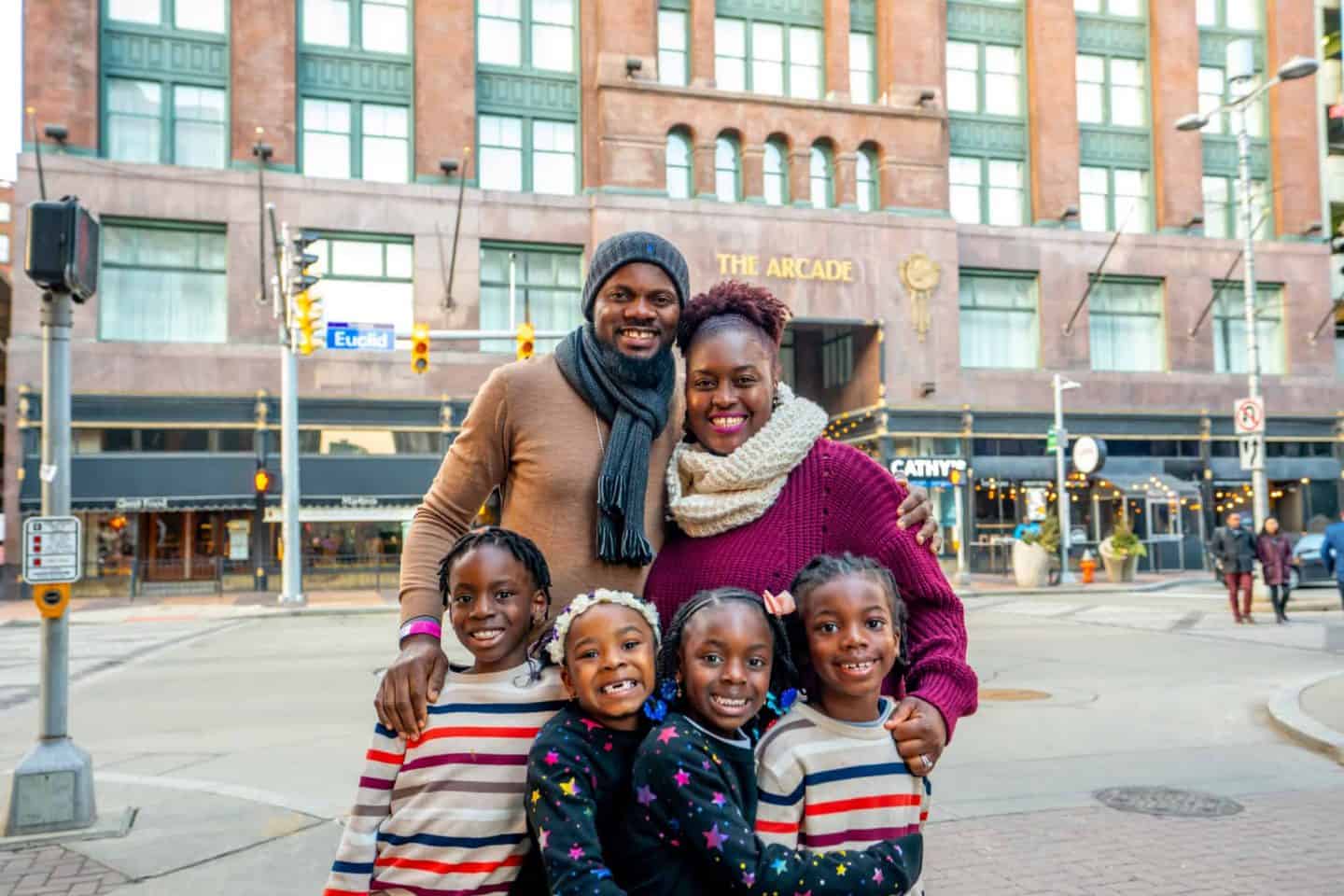
It takes a lot more than having a black anything not to be racist. What are you doing in your everyday life to change the narrative?? Ask yourself this question and evaluate yourself.
Please don’t tell me “I don’t see color and my kids don’t either”. Unless you are all color blind we all see color. However do you see past color? Or do you see color and automatically make assumptions? Do you see my color, hear my cry, acknowledge what I’m dealing with and stand with me at this time, or do you make the “All lives matter” excuse and keep on going?

I do see color, my son sees color. I teach my son about all the beautiful people in the world and how God created each of us to be so unique and amazing AND I also teach him to look PAST color and remember never to make any assumption of anyone or any race or any group of people ever.
He knows never to judge anyone by the color of their skin, but get to know them and judge them by the content of their character (MLK).
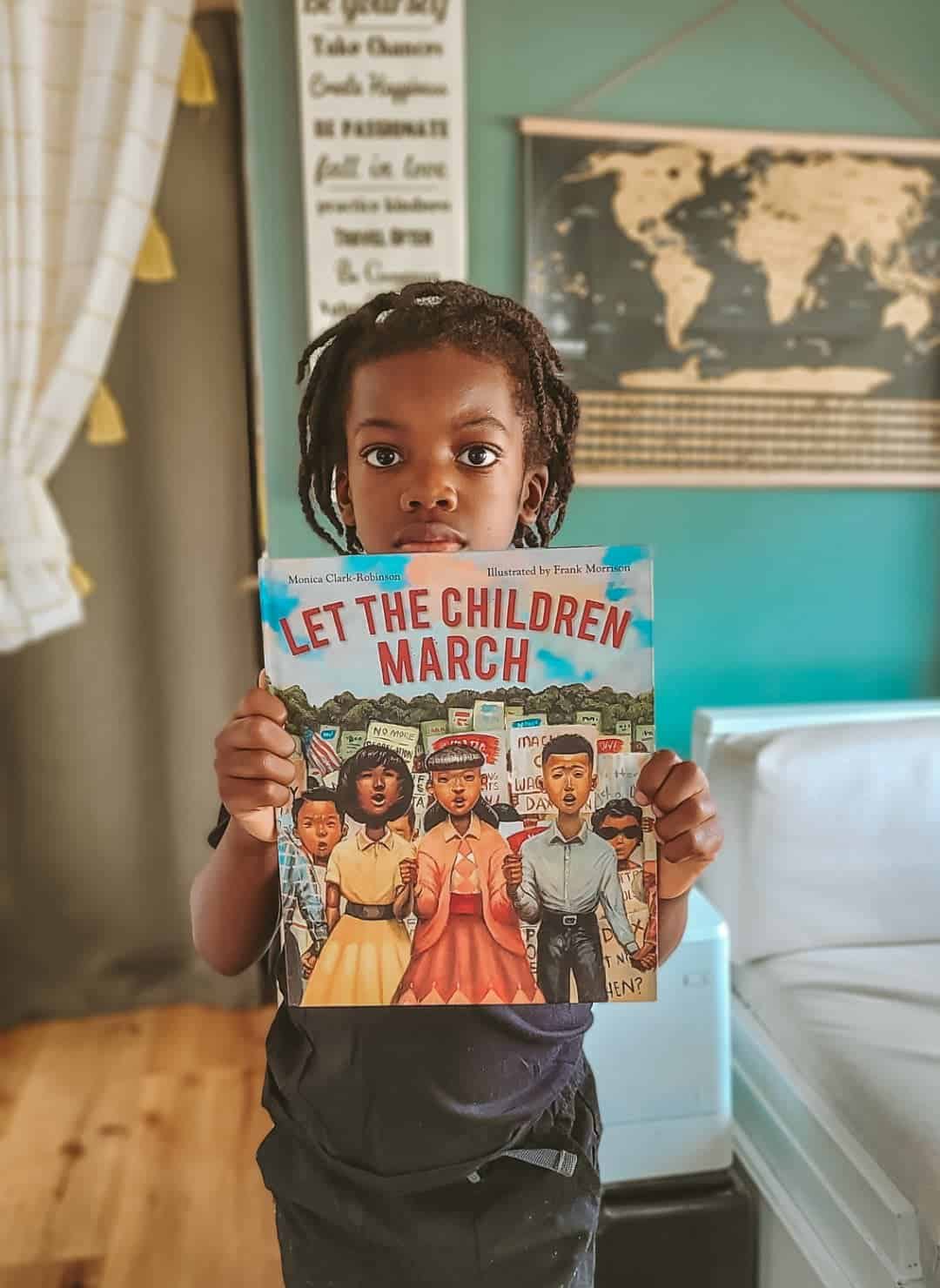
Sometimes YOU, yes YOU, can’t even teach your kids how do this because you can’t do it. But urge you to start somewhere. Below are a list of books you can start with:
Diverse & Anti-Racist Books For Kids

Yes, this really is a kids book about racism. Inside, you’ll find a clear description of what racism is, how it makes people feel when they experience it, and how to spot it when it happens. This is one conversation that’s never too early to start, and this book was written to be an introduction for kids on the topic.
2. We Are the Change: Words of Inspiration from Civil Rights Leaders

Sixteen award-winning children’s book artists illustrate the civil rights quotations that inspire them in this stirring and beautiful book. Featuring an introduction by Harry Belafonte, words from Eleanor Roosevelt, Maya Angelou, and Dr. Martin Luther King, Jr. among others, this inspirational collection sets a powerful example for generations of young leaders to come.
3. What Do You Stand For? For Kids: A Guide to Building Character

Even elementary school children can build positive character traits like caring, citizenship, cooperation, courage, fairness, honesty, respect, and responsibility. The true stories, inspiring quotations, thought-provoking dilemmas, and activities in this book help kids grow into capable, moral teens and adults.
4. Diversity Is Key: A story about embracing differences

It’s diversity week at Amelia’s school, and she has no clue what it means or why it matters. Every day, she’s introduced to cultures, cuisines and customs that push Amelia outside her comfort zone and test her preconceived notions about people and places.
Amelia has lots of questions (and a few concerns), but the more she experiences, the more she realizes how diversity makes life more fun. She also discovers that differences shouldn’t divide people because everyone shares something in common

Rosa Parks dared to stand up for herself and other African Americans by staying seated, and as a result she helped end public bus segregation and launch the country’s Civil Rights Movement.
This engaging series is the perfect way to bring American history to life for young children, providing them with the right role models, supplementing Common Core learning in the classroom, and best of all, inspiring them to strive and dream.
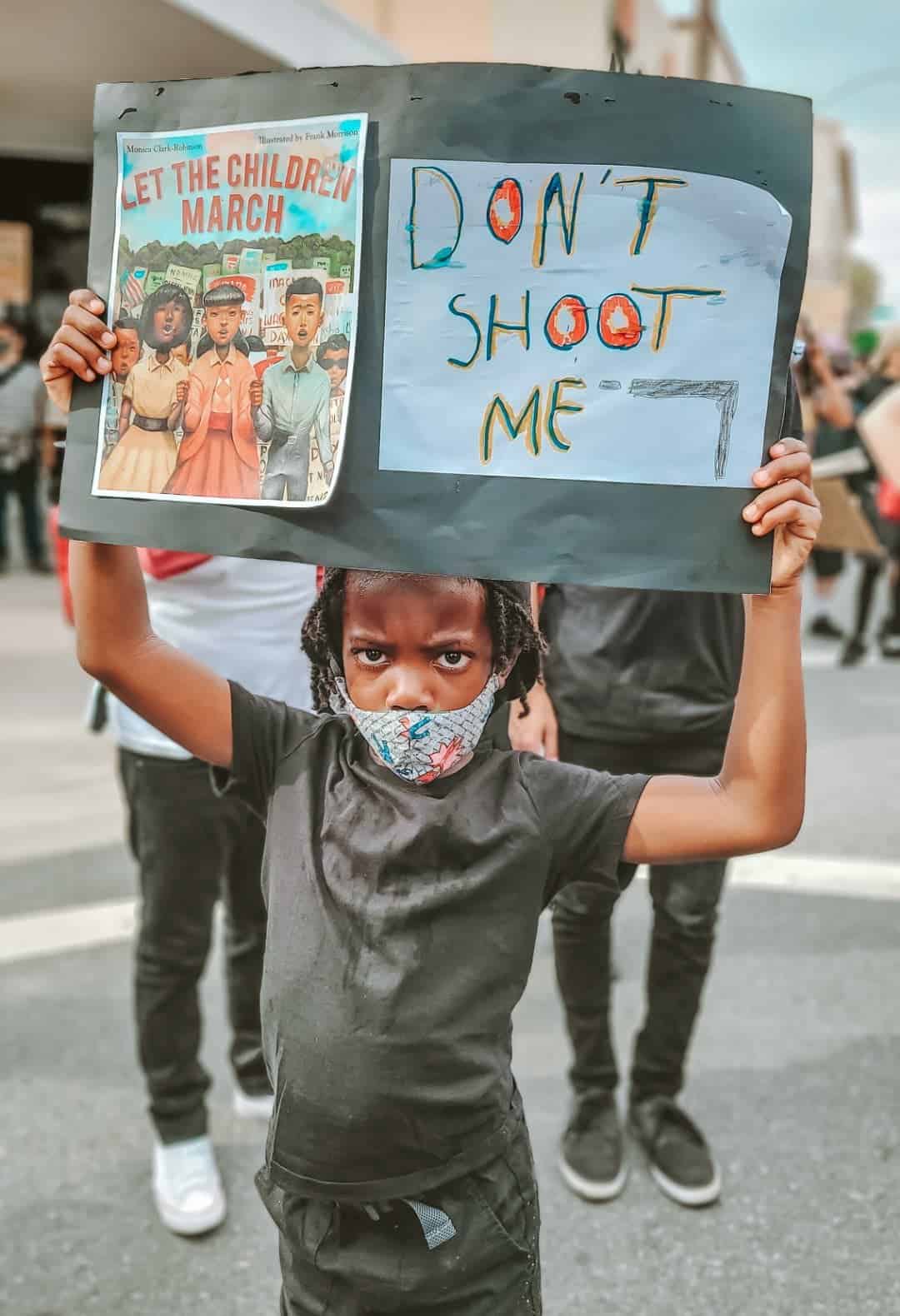
6. The Story of Martin Luther King Jr.

An approachable way to introduce young children to this civil rights trailblazer.

This book is for ages 3-5. Friends come in all colors and sizes; they can be funny or serious, musical or athletic, outgoing or quiet. This book reminds children to celebrate their differences because that is what makes each of us so special.
8. This Is How We Do It: One Day in the Lives of Seven Kids from around the World

Follow the real lives of seven kids from Italy, Japan, Iran, India, Peru, Uganda, and Russia for a single day! In Japan Kei plays Freeze Tag, while in Uganda Daphine likes to jump rope. But while the way they play may differ, the shared rhythm of their days and this one world we all share unites them.
This genuine exchange provides a window into traditions that may be different from our own as well as a mirror reflecting our common experiences.
9. All Kinds of People (Board Book)

This board book is perfect for the youngest readers. Cocoa, tan, rose, and almond; people come in lots of shades, even in the same family.
This exploration of one of our most noticeable physical traits pairs simple text with vibrant photographs. At school, at the beach, and in the city, diverse groups of children invite young readers both to take notice and to look beyond the obvious.
10. Loving vs. Virginia: A Documentary Novel of the Landmark Civil Rights Case

From acclaimed author Patricia Hruby Powell comes the story of a landmark civil rights case, told in spare and gorgeous verse. In 1955, in Caroline County, Virginia, amidst segregation and prejudice, injustice and cruelty, two teenagers fell in love.
Their life together broke the law, but their determination would change it. Richard and Mildred Loving were at the heart of a Supreme Court case that legalized marriage between races, and a story of the devoted couple who faced discrimination, fought it, and won.
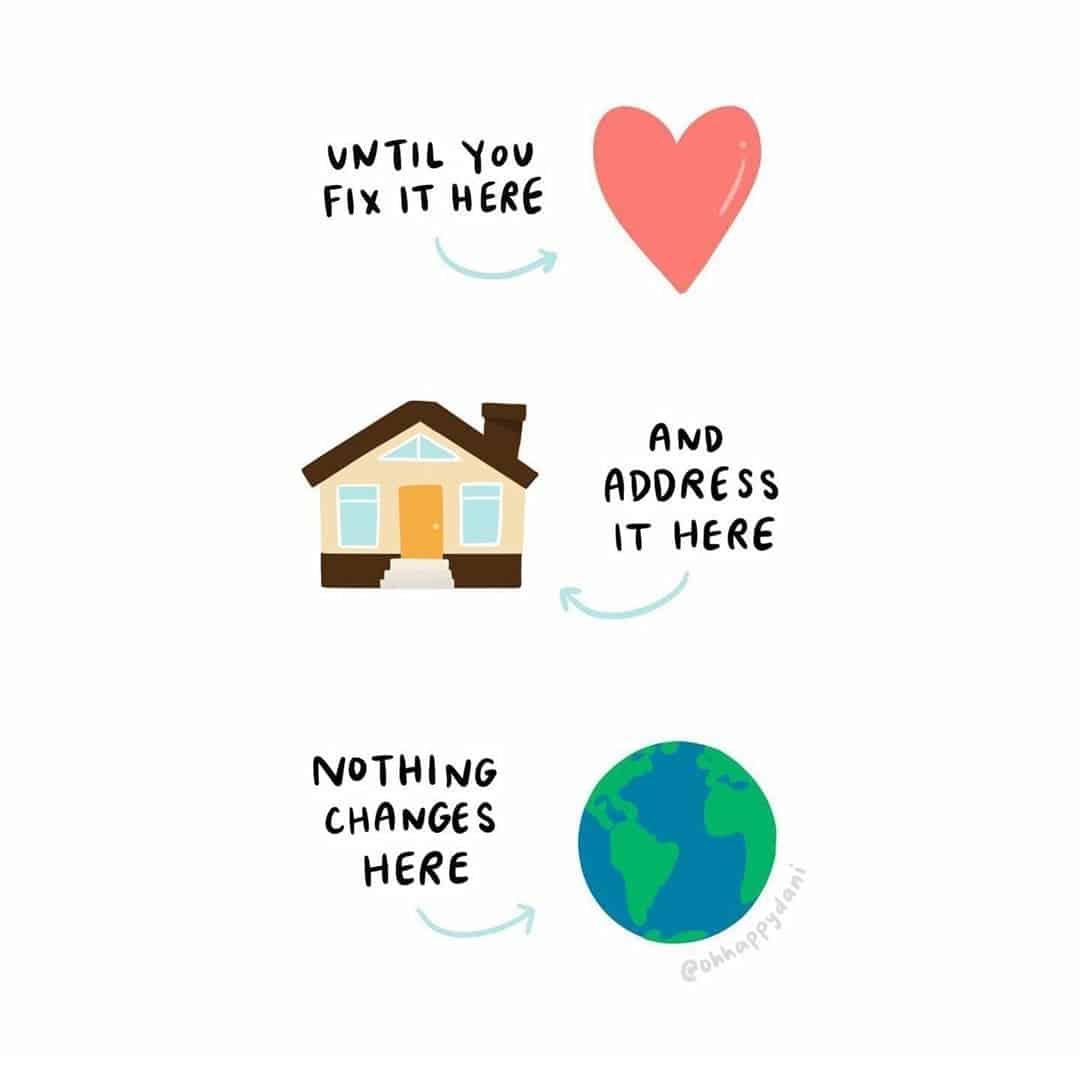

Elliot lives in America, and Kailash lives in India. They are pen pals. By exchanging letters and pictures, they learn that they both love to climb trees, have pets, and go to school. Their worlds might look different, but they are actually similar. Same, same. But different!
Through an inviting point-of-view and colorful, vivid illustrations, this story shows how two boys living oceans apart can be the best of friends.

A favorite in classrooms, libraries, and homes, Children Just Like Me is a comprehensive view of international cultures, exploring diverse backgrounds from Argentina to New Zealand to China to Israel. With this brand new edition, children will learn about their peers around the world through engaging photographs and understandable text laid out in DK’s distinctive style.
Highlighting 36 different countries, Children Just Like Me profiles 44 children and their daily lives. From rural farms to busy cities to riverboats, this celebration of children around the world shows the many ways children are different and the many ways they are the same, no matter where they live.

Almost 10 years before Brown vs. Board of Education, Sylvia Mendez and her parents helped end school segregation in California. An American citizen of Mexican and Puerto Rican heritage who spoke and wrote perfect English, Mendez was denied enrollment to a “Whites only” school.
Her parents took action by organizing the Hispanic community and filing a lawsuit in federal district court. Their success eventually brought an end to the era of segregated education in California.
14. We’re Different, We’re the Same

Who better than Sesame Street to teach us that we may all look different on the outside but it’s important to remember that deep down, we are all very much alike.
Elmo and his Sesame Street friends help teach toddlers and the adults in their lives that everyone is the same on the inside, and it’s our differences that make this wonderful world, which is home to us all, an interesting and special place.
15. A is for Activist (Board Book)

A is for Activist is an ABC board book written and illustrated for the next generation of progressives: families who want their kids to grow up in a space that is unapologetic about activism, environmental justice, civil rights, LGBTQ rights, and everything else that activists believe in and fight for.
The alliteration, rhyming, and vibrant illustrations make the book exciting for children, while the issues it brings up resonate with their parents’ values of community, equality, and justice.

16. Dreamers

Dreamers is a celebration of making your home with the things you always carry: your resilience, your dreams, your hopes and history. It’s the story of finding your way in a new place, of navigating an unfamiliar world and finding the best parts of it. In dark times, it’s a promise that you can make better tomorrows.
This lovingly-illustrated picture book memoir looks at the myriad gifts migrants bring with them when they leave their homes. It’s a story about family. And it’s a story to remind us that we are all dreamers, bringing our own strengths wherever we roam.
17. All Are Welcome

Follow a group of children through a day in their school, where everyone is welcomed with open arms. A school where kids in patkas, hijabs, and yarmulkes play side-by-side with friends in baseball caps. A school where students grow and learn from each other’s traditions and the whole community gathers to celebrate the Lunar New Year.
All Are Welcome lets young children know that no matter what, they have a place, they have a space, they are welcome in their school.

In Racism and Intolerance, children can get answers to questions like: “What does it mean to be a racist–or intolerant?” and “How can I help?” Children will begin to understand the way others struggle with these issues and become empowered to make a difference.
The author uses a deft hand to create powerful illustrations that help children visualize the people impacted by poverty, hunger, war, racism, and more. All of the images are sensitively rendered and perfectly suited for younger children.
19. Whoever You Are

Every day all over the world, children are laughing and crying, playing and learning, eating and sleeping. They may not look the same. They may not speak the same language. Their lives may be quite different. But inside, they are all alike.
Stirring words and bold paintings weave their way around our earth, across cultures and generations. At a time when, unfortunately, the lessons of tolerance still need to be learned, Whoever You Are urges us to accept our differences, to recognize our similarities, and-most importantly-to rejoice in both.
20. What If We Were All The Same!

What If We Were All The Same! embraces all of our beautiful differences. Aimed to help children understand there are many great reasons for being friends with those who are different than they are.
Whether they have red hair or brown hair, green eyes or blue eyes, long legs or short legs, light skin or dark skin, glasses, uses a wheelchair or anything else, it’s absolutely okay! Our differences are what makes us unique and if we think about it, would you want to be the exact same as someone else?
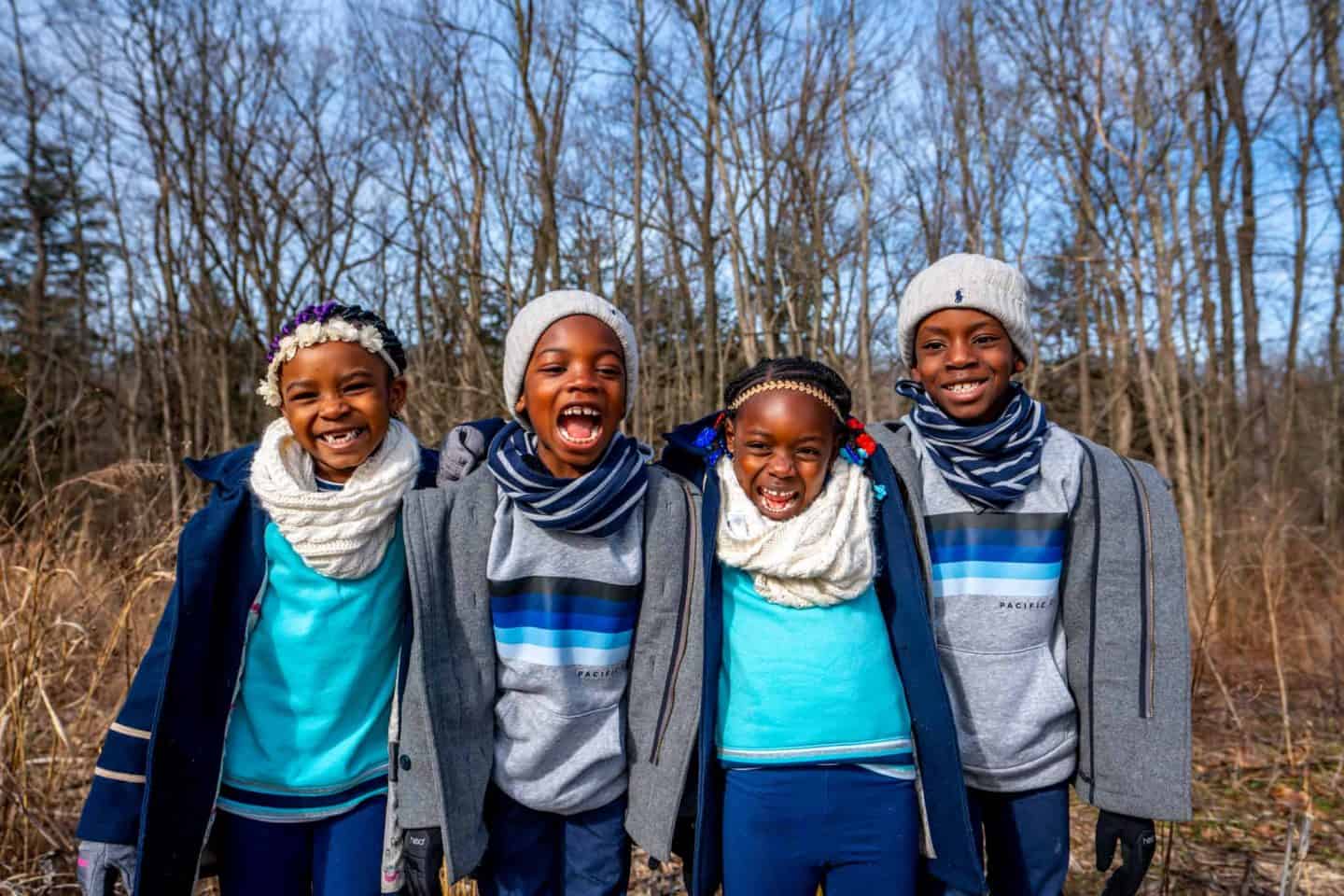
21. Child of the Civil Rights Movement

Paula Young Shelton, daughter of Civil Rights activist Andrew Young, brings a child’s unique perspective to an important chapter in America’s history. Paula grew up in the deep south, in a world where whites had and blacks did not.
With an activist father and a community of leaders surrounding her, including Uncle Martin (Martin Luther King), Paula watched and listened to the struggles, eventually joining with her family and thousands of others in the historic march from Selma to Montgomery.

In 1963 Birmingham, Alabama, thousands of African American children volunteered to march for their civil rights after hearing Dr. Martin Luther King Jr. speak. They protested the laws that kept black people separate from white people.
Facing fear, hate, and danger, these children used their voices to change the world. Frank Morrison’s emotive oil-on-canvas paintings bring this historical event to life, while Monica Clark-Robinson’s moving and poetic words document this remarkable time.
23. What Was the Underground Railroad?

No one knows where the term Underground Railroad came from. There were no trains or tracks, only “conductors” who helped escaping slaves to freedom.
Including real stories about “passengers” on the “Railroad,” this book chronicles slaves’ close calls with bounty hunters, exhausting struggles on the road, and what they sacrificed for freedom.

Makayla is visiting friends in her neighborhood. She sees how each family is different. Some families have lots of children, but others have none.
Some friends live with grandparents or have two dads or have parents who are divorced. How is her own family like the others? What makes each one great? This diverse cast allows readers to compare and contrast families in multiple ways.
25. Mr. Williams

When Mr. Williams was a boy growing up in Arcadia, Louisiana, Calvin Coolidge was president, Martin Luther King Jr. had just been born, and children worked hard in the fields for most of the year.
Many years later, Karen Barbour grew up hearing Mr. Williams tell stories about his childhood. In this beautiful book, she not only shares the memories he passed on to her but also creates stunning paintings to illustrate them. The story of Mr. Williams evokes a specific time and place in American history in a way that is immediate, intimate, and relevant.
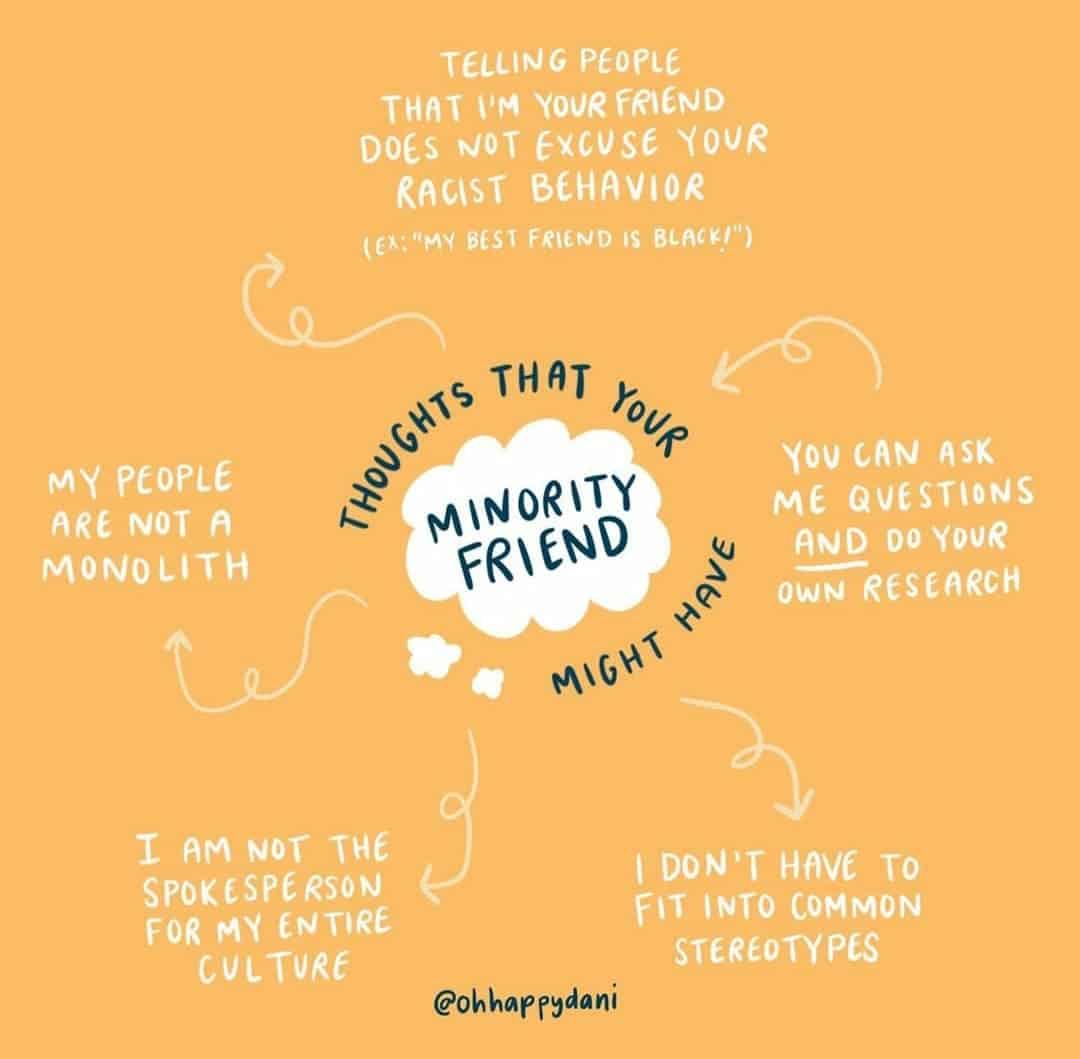
26. Freedom Summer

Joe and John Henry are a lot alike. They both like shooting marbles, they both want to be firemen, and they both love to swim. But there’s one important way they’re different: Joe is white and John Henry is black, and in the South in 1964, that means John Henry isn’t allowed to do everything his best friend is.
Then a law is passed that forbids segregation and opens the town pool to everyone. Joe and John Henry are so excited they race each other there…only to discover that it takes more than a new law to change people’s hearts.
27. White Socks Only

In the segregated south, a young girl thinks that she can drink from a fountain marked “Whites Only” because she is wearing her white socks.
28. Sit-In: How Four Friends Stood Up by Sitting Down

The author uses poetic, powerful prose to tell the story of these four young men, who followed Dr. Martin Luther King Jr.’s words of peaceful protest and dared to sit at the “whites only” Woolworth’s lunch counter.
29. The Proudest Blue: A Story of Hijab and Family

With her new backpack and light-up shoes, Faizah knows the first day of school is going to be special. It’s the start of a brand new year and, best of all, it’s her older sister Asiya’s first day of hijab, a hijab of beautiful blue fabric, like the ocean waving to the sky. But not everyone sees hijab as beautiful, and in the face of hurtful, confusing words, Faizah will find new ways to be strong.
30. What’s the Difference?: Being Different Is Amazing

The author tackles a timely and universal subject; diversity and acceptance, and distills it for the youngest readers. Because what matters most is not our differences, but what we do together as friends, as families, as colleagues, as citizens.
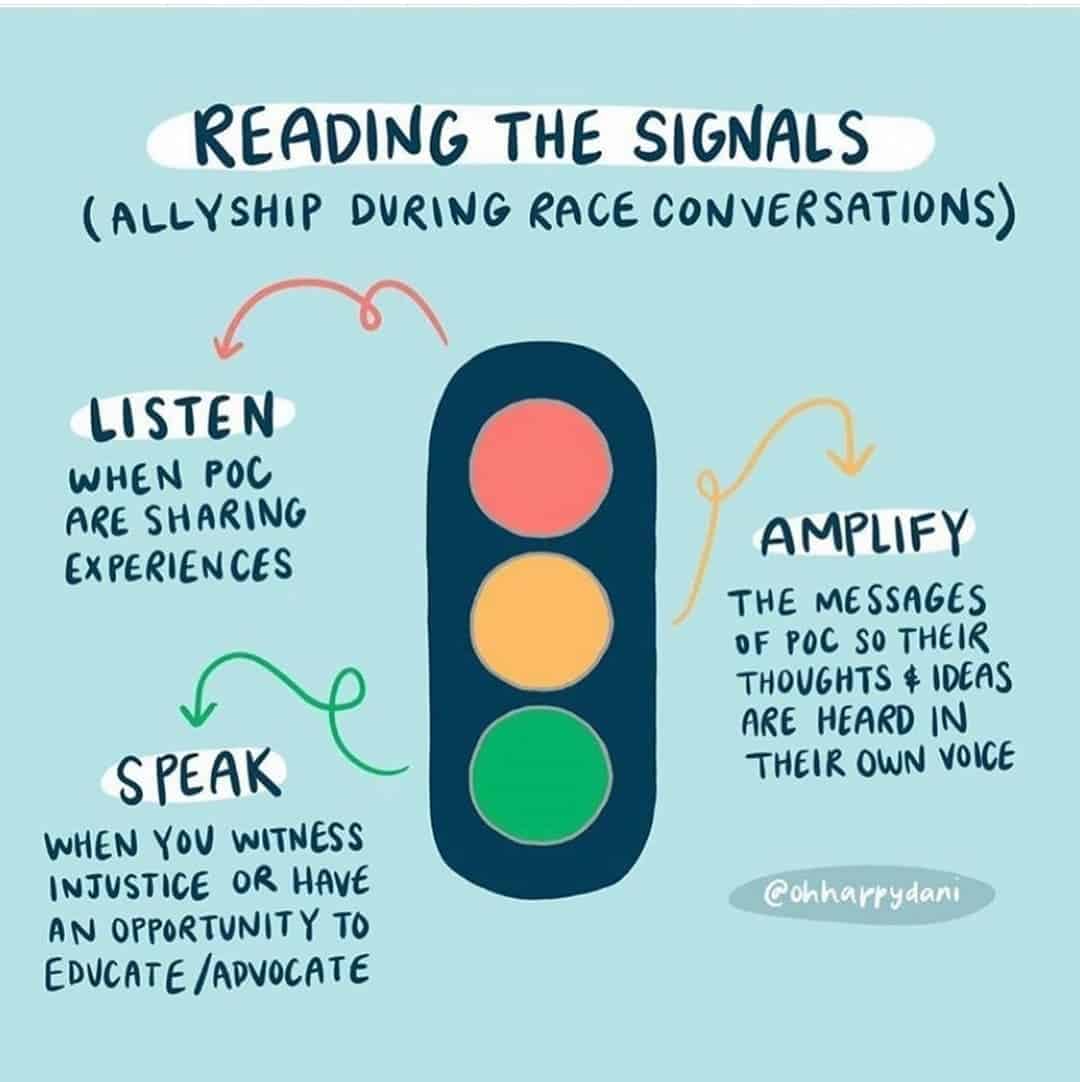

Is there anything more splendid than a baby’s skin? Cocoa-brown, cinnamon, peaches and cream. As children grow, their clever skin does, too, enjoying hugs and tickles, protecting them inside and out, and making them one of a kind.
32. Hidden Figures: The True Story of Four Black Women and the Space Race

The author brings the incredibly inspiring true story of four black women who helped NASA launch men into space to picture book readers! This nonfiction picture book is an excellent choice to share during homeschooling, in particular for children ages 4 to 6. It’s a fun way to learn to read and as a supplement for activity books for children.
33. One Big Heart: A Celebration of Being More Alike than Different

From skin, hair, and eyes in a multitude of colors to different personalities and interests, God gave us all special traits and characteristics that make us uniquely ourselves. And we all have things in common too: like sharing fun and laughter on the playground, a sense of curiosity, big feelings, and so many other things that show how we are all more alike than we are different.
34. Kid Activists: True Tales of Childhood from Champions of Change

Every activist started out as a kid, and in some cases they were kids when their activism began! But even the world’s greatest champions of civil liberties had relatable interests and problems, often in the middle of extraordinary circumstances.
35. Bedtime Inspirational Stories: 50 Amazing Black People Who Changed the World

Bedtime Inspirational Stories celebrates the achievements of the amazing black heroes who have paved the way for future generations.Unfortunately, in today’s world, it can be a challenge to raise positive kids, as they are constantly bombarded with negative messages.
More than ever, parents and teachers need to create a positive atmosphere for our children in order to help them believe in themselves.

Diverse And Anti-Racist Books For Adults
1. This Book Is Anti-Racist: 20 Lessons on How to Wake Up, Take Action, and Do The Work

Gain a deeper understanding of your anti-racist self as you progress through 20 chapters that spark introspection, reveal the origins of racism that we are still experiencing and give you the courage and power to undo it.
Each chapter builds on the previous one as you learn more about yourself and racial oppression. Exercise prompts get you thinking and help you grow with the knowledge.

Raising White Kids is for families, churches, educators, and communities who want to equip their children to be active and able participants in a society that is becoming one of the most racially diverse in the world while remaining full of racial tensions.
For white people who are committed to equity and justice, living in a nation that remains racially unjust and deeply segregated creates unique conundrums.
3. The ABCs of Diversity: Helping Kids (and Ourselves!) Embrace Our Difference

Learn the language of diversity and raise kids who respect differences and honor similarities. The ABCs of Diversity equips parents, teachers, and community leaders to have intergenerational and intercultural conversations about the differences between us.
This book helps parents and teachers of children, youth, and young adults navigate conversations about differences so they can raise up individuals committed to respectful civic engagement. Such intercultural dialogues can support communities as they work for the mutual well-being of all.
This book includes specific resources and activities for persons of various ages that parents and community leaders can employ to encourage compassion and empathy.
4. White Fragility: Why It’s So Hard for White People to Talk About Racism

In this book, antiracist educator Robin DiAngelo deftly illuminates the phenomenon of white fragility and “allows us to understand racism as a practice not restricted to ‘bad people’. Referring to the defensive moves that white people make when challenged racially, white fragility is characterized by emotions such as anger, fear, and guilt, and by behaviors including argumentation and silence.
These behaviors, in turn, function to reinstate white racial equilibrium and prevent any meaningful cross-racial dialogue. In this in-depth exploration, DiAngelo examines how white fragility develops, how it protects racial inequality, and what we can do to engage more constructively.

Antiracism is a transformative concept that reorients and reenergizes the conversation about racism and, even more fundamentally, points us toward liberating new ways of thinking about ourselves and each other. At it’s core, racism is a powerful system that creates false hierarchies of human value; its warped logic extends beyond race, from the way we regard people of different ethnicities or skin colors to the way we treat people of different sexes, gender identities, and body types.
Racism intersects with class and culture and geography and even changes the way we see and value ourselves. In How to Be an Anti-racist, Kendi takes readers through a widening circle of anti-racist ideas from the most basic concepts to visionary possibilities that will help readers see all forms of racism clearly, understand their poisonous consequences, and work to oppose them in our systems and in ourselves.
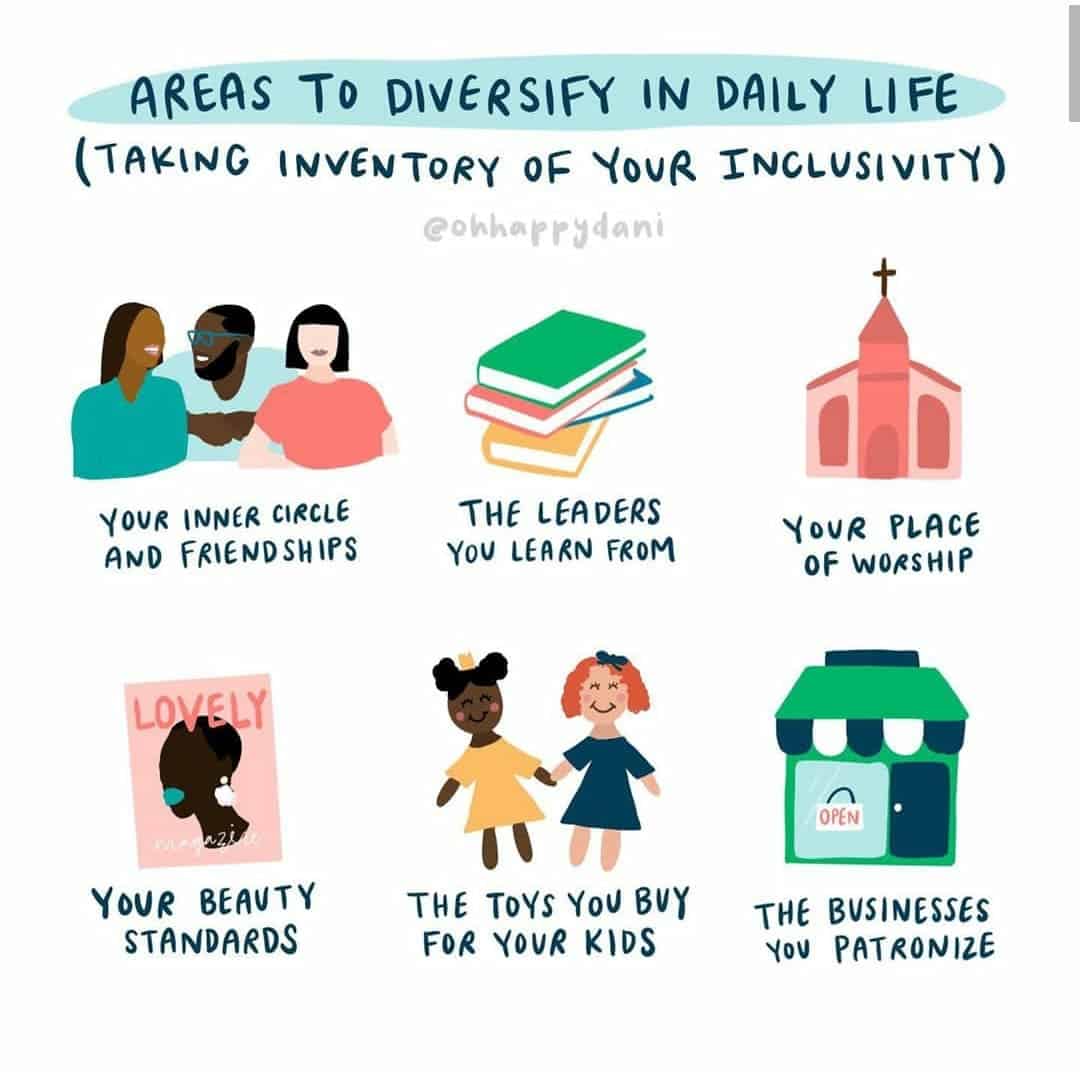
6. Me and White Supremacy: Combat Racism, Change the World, and Become a Good Ancestor

This book will help you take the work deeper by adding more historical and cultural contexts, sharing moving stories and anecdotes, and including expanded definitions, examples, and further resources, giving you the language to understand racism, and to dismantle your own biases, whether you are using the book on your own, with a book club, or looking to start family activism in your own home.
This book will walk you step-by-step through the work of examining:
- Examining your own white privilege
- What allyship really means
- Anti-blackness, racial stereotypes, and cultural appropriation
- Changing the way that you view and respond to race
- How to continue the work to create social change
7. So You Want to Talk About Race

In So You Want to Talk About Race, Ijeoma Oluo guides readers of all races through subjects ranging from intersectionality and affirmative action to “model minorities” in an attempt to make the seemingly impossible possible: honest conversations about race and racism, and how they infect almost every aspect of American life.
8. I’m Still Here: Black Dignity in a World Made for Whiteness

Austin Channing Brown’s first encounter with a racialized America came at age 7, when she discovered her parents named her Austin to deceive future employers into thinking she was a white man.
Growing up in majority-white schools, organizations, and churches, Austin writes, “I had to learn what it means to love blackness,” a journey that led to a lifetime spent navigating America’s racial divide as a writer, speaker and expert who helps organizations practice genuine inclusion.
9. Biased: Uncovering the Hidden Prejudice That Shapes What We See, Think, and Do

With a perspective that is at once scientific, investigative, and informed by personal experience, Dr. Jennifer Eberhardt offers us the language and courage we need to face one of the biggest and most troubling issues of our time.
She exposes racial bias at all levels of society in our neighborhoods, schools, workplaces, and criminal justice system. Yet she also offers us tools to address it. Eberhardt shows us how we can be vulnerable to bias but not doomed to live under its grip. Racial bias is a problem that we all have a role to play in solving.
10. Blindspot: Hidden Biases of Good People

In Blindspot, the authors reveal hidden biases based on their experience with the Implicit Association Test, a method that has revolutionized the way scientists learn about the human mind and that gives us a glimpse into what lies within the metaphoric blindspot.
The title’s “good people” are those of us who strive to align our behavior with our intentions. The aim of Blindspot is to explain the science in plain enough language to help well-intentioned people achieve that alignment. By gaining awareness, we can adapt beliefs and behavior and “outsmart the machine” in our heads so we can be fairer to those around us. Venturing into this book is an invitation to understand our own minds.
11. Stamped from the Beginning: The Definitive History of Racist Ideas in America

Some Americans insist that we’re living in a post-racial society. But racist thought is not just alive and well in America–it is more sophisticated and more insidious than ever. And as award-winning historian Ibram X. Kendi argues, racist ideas have a long and lingering history, one in which nearly every great American thinker is complicit.
In this deeply researched and fast-moving narrative, Kendi chronicles the entire story of anti-black racist ideas and their staggering power over the course of American history. He uses the life stories of five major American intellectuals to drive this history: Puritan minister Cotton Mather, Thomas Jefferson, abolitionist William Lloyd Garrison, W.E.B. Du Bois, and legendary activist Angela Davis.
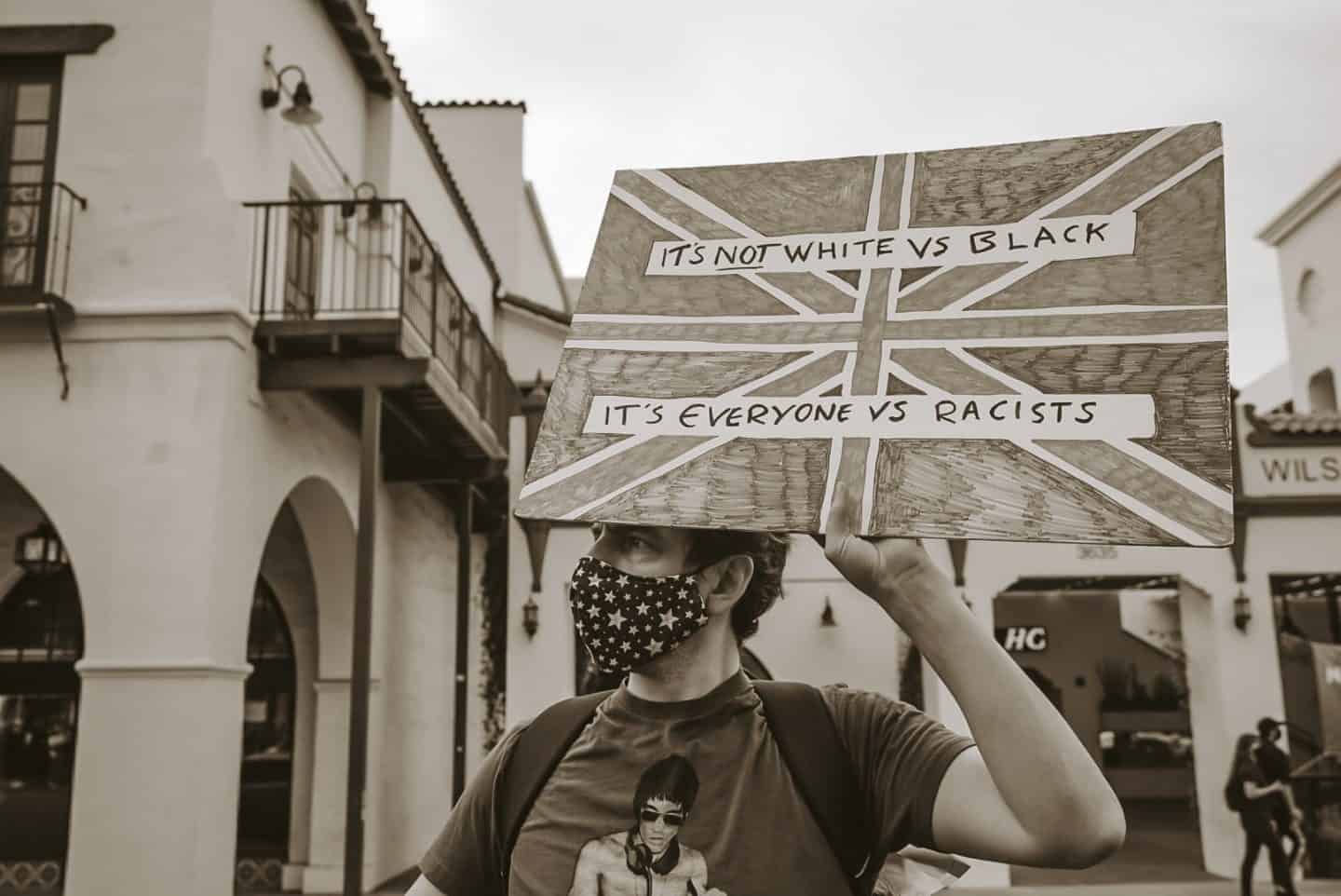
I hope that this list was helpful for you. As new books emerge, I will make sure to keep this page updated. Don’t hesitate to let me know if you have nay questions below.
